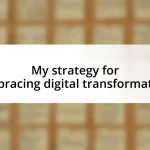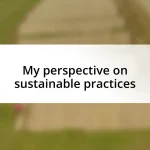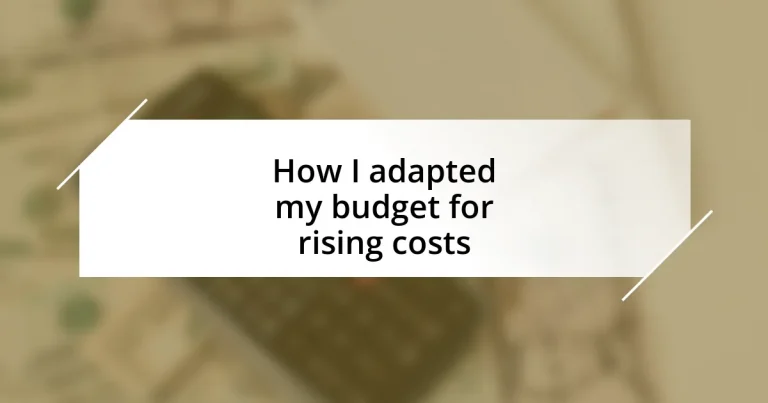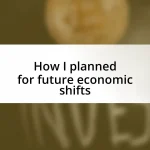Key takeaways:
- Rising living costs have prompted a need for careful budgeting and expense tracking, revealing the impact of inflation and supply chain issues.
- Personal expense analysis highlighted the importance of identifying and adjusting discretionary spending, leading to significant savings.
- Implementing cost-cutting strategies, such as meal planning and mindful purchasing, resulted in both financial relief and a shift in relationship with money.
- Maintaining financial flexibility is crucial for managing unexpected expenses, encouraging regular reassessment of budgets for potential savings.
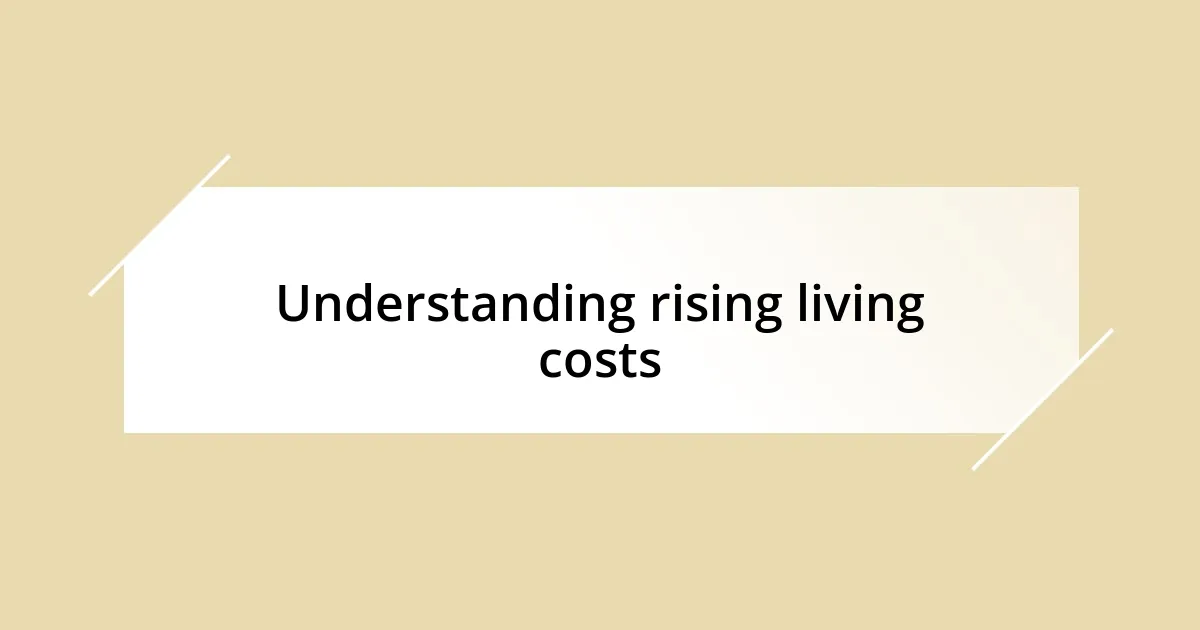
Understanding rising living costs
Rising living costs can feel overwhelming, and I’ve experienced that firsthand. A few months back, I found myself staring in disbelief at my grocery receipt—items I used to buy regularly had surged in price. It made me wonder, how did we get here, and what does this mean for my day-to-day life?
I recall a conversation with a friend who shared her struggles with increasing utility bills. She felt like every month, she was paying more for the same services, which made budgeting seem like an uphill battle. Doesn’t it feel frustrating when our paycheck seems to shrink, even though the numbers on our invoices keep growing?
When I reflect on this situation, I often think about the broader economic factors at play, like inflation and supply chain disruptions. They can create a ripple effect, impacting everything from gas prices to everyday necessities. It’s a tough reality that can leave us wondering how to navigate our financial lives in such uncertain times.
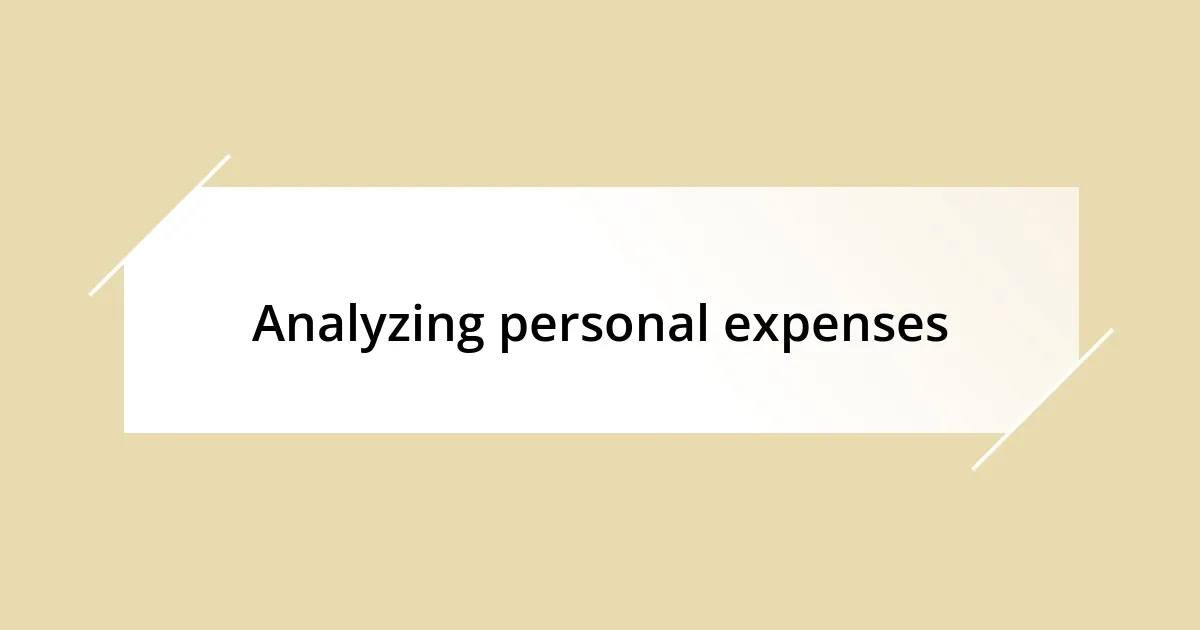
Analyzing personal expenses
Understanding the intricacies of personal expenses is vital in times of rising costs. I remember sitting down with my bank statement one Saturday afternoon, determined to track my spending. As I examined each category, I realized I was spending more impulsively than I thought—little splurges here and there added up more quickly than I expected. This moment opened my eyes to the fact that awareness is the first step towards better financial decisions.
Here’s a breakdown of my typical expenses that I analyzed:
- Groceries: Used to be around $300 a month, now closer to $400.
- Utilities: Monthly bills increased by about 15% in just a few months.
- Transportation: Gasoline prices have surged, pushing my monthly budget from $80 to $120.
- Dining out: What was once a weekly treat has become a rare occasion, shifting from $150 a month to $90.
- Subscriptions: Reviewing these, I found two services I had forgotten about, costing $25 a month together.
By gaining insight into my spending patterns, I felt empowered to make necessary adjustments, prioritizing essentials while cutting back on less important expenses.
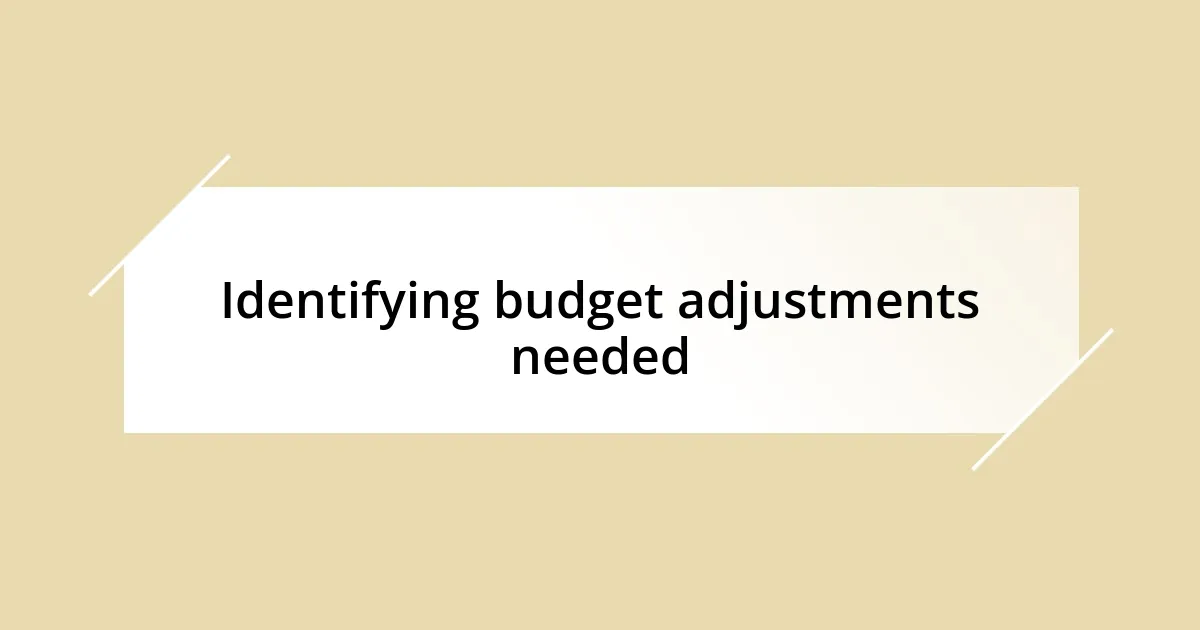
Identifying budget adjustments needed
Identifying budget adjustments required a deep dive into my own spending habits. One evening, I sat on my couch, feeling the weight of rising costs. As I meticulously categorized my expenditures, I noticed that my entertainment expenses were surprisingly high. I had been streaming a myriad of services, often forgetting to cancel the free trials. This realization was a little embarrassing—I mean, how often do we think we’re saving money when in reality, we’re just letting subscriptions slip through the cracks?
The process involved more than just reviewing numbers; it was a wake-up call. I remember a particular moment when I looked at my dining out budget and felt a pang of regret—$120 a month spent on meals I could have cooked at home for a fraction of the cost. Thinking back, those spontaneous outings felt justified in the moment, but understanding the long-term impact made me wonder: Was dining out really worth the creeping debt? By pinpointing these areas, I realized the necessity to adjust my budget proactively instead of waiting for my bank account to feel the pinch.
To put my findings in perspective, here’s a simple comparison of adjustments I made:
| Expense Category | Previous Spending | Adjusted Spending |
|---|---|---|
| Groceries | $400 | $350 |
| Utilities | $200 | $175 |
| Transportation | $120 | $100 |
| Dine Out | $120 | $60 |
| Subscriptions | $50 | $25 |
These adjustments may seem small, but collectively they alleviated some financial stress. Who knew that being mindful of where my money went could lead to such significant changes? It’s like turning on a light in a dark room—everything suddenly becomes clear.
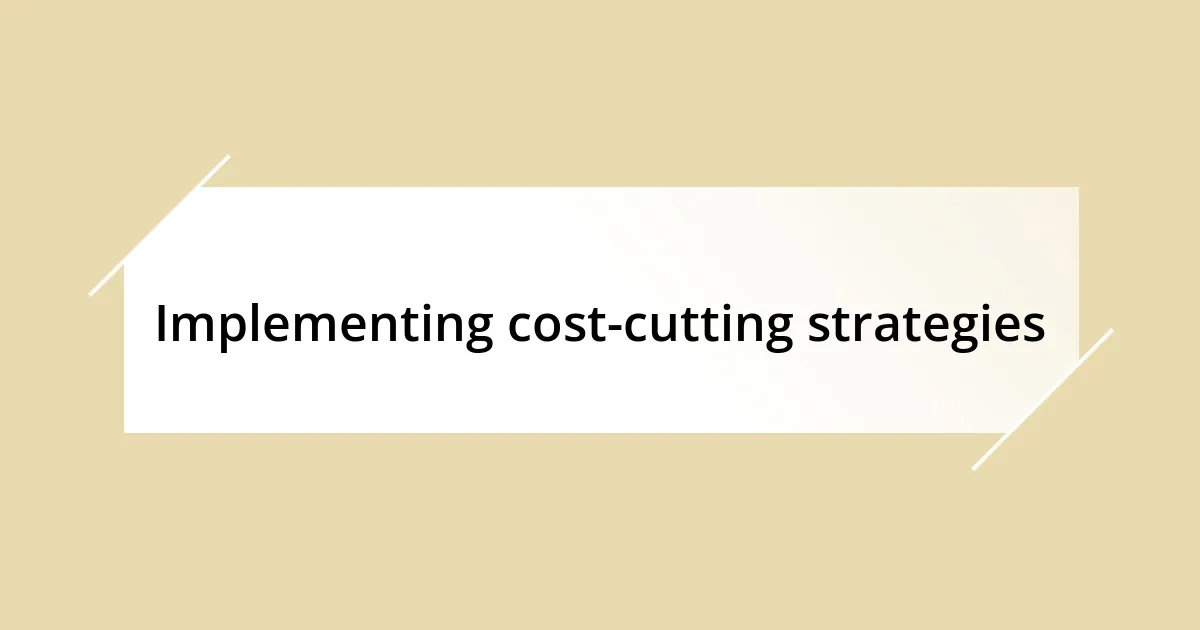
Implementing cost-cutting strategies
Implementing cost-cutting strategies can feel like peeling back layers of an onion—somewhat uncomfortable but ultimately rewarding. I remember deciding to carve my grocery budget down one week. I experimented with meal planning and grocery lists. The first time I stuck to my list, I felt an unexpected thrill when I left the store, knowing I had saved nearly $50. Who knew that a little planning could make such a big impact on my wallet?
Another strategy I adopted was tackling my impulse purchases head-on. I vividly recall walking through a store and spotting a gorgeous pair of shoes—my heart raced! But instead of buying them on a whim, I took a moment to think: “Is this really a need or just a want?” I realized that postponing the purchase made me appreciate it far more, and I ended up walking away. It’s a small victory, but it helped me to foster a more mindful approach to spending.
Lastly, I embraced the idea of cutting unnecessary subscriptions. Once, I was attached to a streaming service that I hadn’t used in months. Letting go felt like a liberation! I asked myself, “Was my convenience worth the monthly fee?” The answer was a solid no. By trimming the fat off my budget in these areas, I found not only financial relief but also a certain peace of mind that shifted my relationship with money altogether. What’s more fulfilling than knowing your financial decisions align with your values?
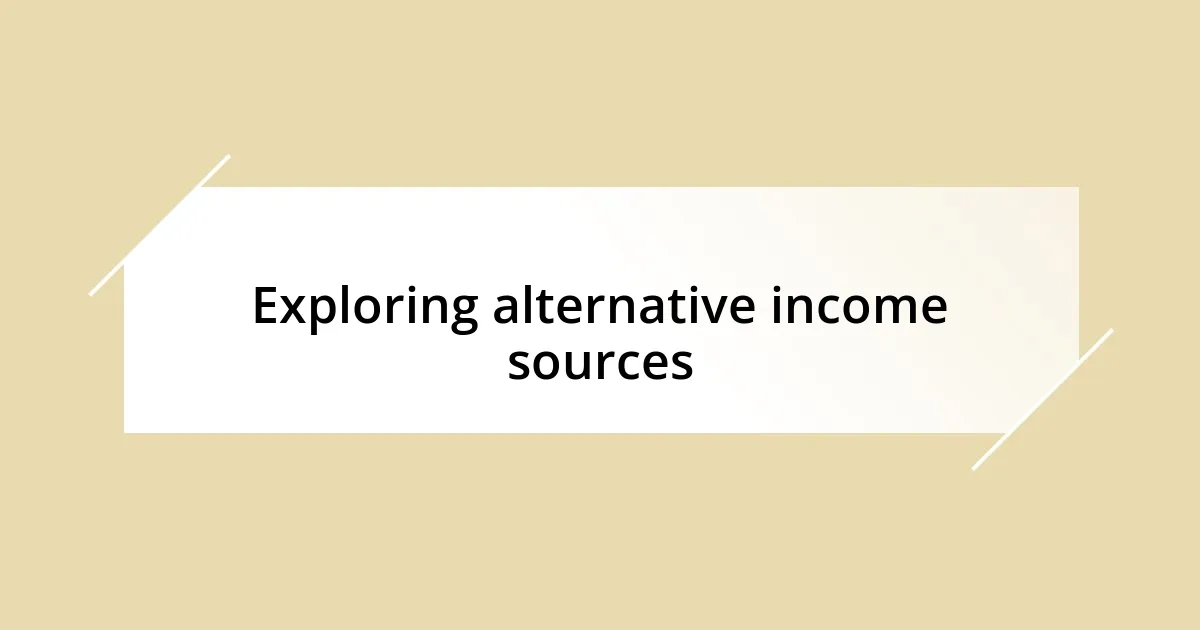
Exploring alternative income sources
Exploring alternative income sources can be an eye-opening experience. I remember the day I stumbled upon the concept of freelancing. It hit me just how many skills I had—from writing to graphic design. I thought, why not turn those hobbies into a side gig? The first project I landed felt exhilarating! Seeing my talent valued outside of my 9-to-5 was a game changer.
Another avenue I ventured into was selling items I no longer needed. I felt a bit hesitant at first—will anyone actually want my stuff? But once I organized a small garage sale, the response was incredible! That thrill of turning clutter into cash was so rewarding. Plus, it felt like a fresh start, both mentally and financially. Have you ever tried decluttering for profit? You might be surprised at what’s lying around waiting to be sold!
Lastly, I explored the gig economy through apps that connect people with short-term work. I took on a few pet-sitting jobs and discovered how much joy it brought me—caring for furry friends while earning some extra cash! It turned out to be a win-win: I met some wonderful animals and added to my income. If you haven’t considered tapping into your local community for quick gigs, I highly recommend giving it a go; you never know what you might find or who you might meet!
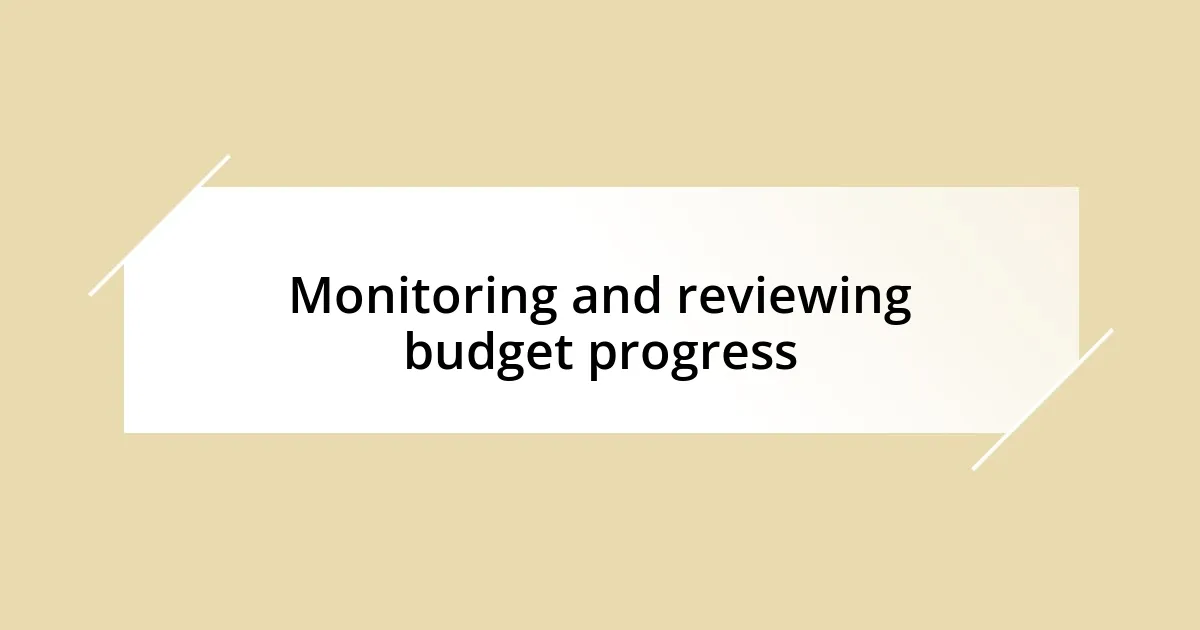
Monitoring and reviewing budget progress
As I embarked on my budgeting journey, I quickly realized that monitoring and reviewing my budget wasn’t just another task on my to-do list; it became a vital part of my financial wellness. I remember sitting down at the end of each month with my notepad, coffee in hand, and going through every line of my expenses. I felt a mix of apprehension and excitement. Had I stayed within my limits? Those moments of reflection helped me see patterns in my spending that I hadn’t noticed before.
There were times when I had to ask myself tough questions during these reviews. Did I really need that expensive coffee shop break or was it just a comfort habit? Once, after reviewing my eating out expenses, I realized I had spent more on dining out than I had intended. That prompted me to shake things up—I’d cook a big batch of my favorite chili instead. I felt a sense of empowerment as I made conscious choices that aligned with my financial goals.
To make this process even more enjoyable, I used apps to track my spending in real-time. I vividly recall the first time I received a notification that I’d hit my savings target for the month—I felt like I had just won the lottery! Seeing those numbers shift in my favor was motivating. Monitoring my progress became less of a chore and more of a victory dance. Have you ever celebrated a small win in your financial journey? Those little milestones can make a huge difference in maintaining motivation.
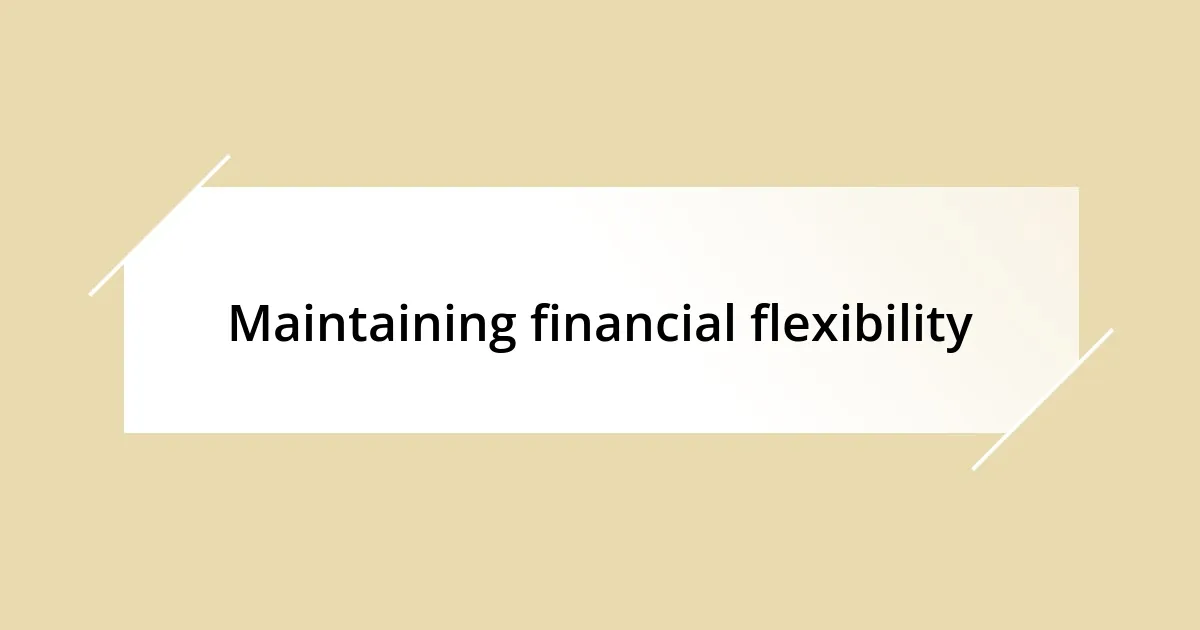
Maintaining financial flexibility
There’s a certain freedom that comes with maintaining financial flexibility. I remember the day I faced an unexpected car repair bill. Instead of panicking, I felt relieved that I had prioritized some savings. It was a small cushion, but it transformed what could have been a stressful situation into a manageable one. Don’t you want that sort of peace of mind when life throws a curveball?
I’ve learned that keeping a portion of my budget adaptable to changes—like rising costs or surprise expenses—really pays off. This means I intentionally allocate funds for discretionary spending, which can absorb any fluctuations. I often adjust this “flex fund” based on what’s happening in my life each month. It’s like my financial safety net. Have you thought about how you can create a similar buffer in your budget?
One strategy I’ve adopted is to reassess my expenses regularly, looking for opportunities to cut back where possible. For instance, when I noticed streaming subscriptions piling up, I decided to critique what I really used. By trimming down to just my favorites, I found an additional $30 each month! It’s amazing how the small changes can add up over time. Have you explored your own budget for hidden savings? You might be pleasantly surprised by what you uncover!




